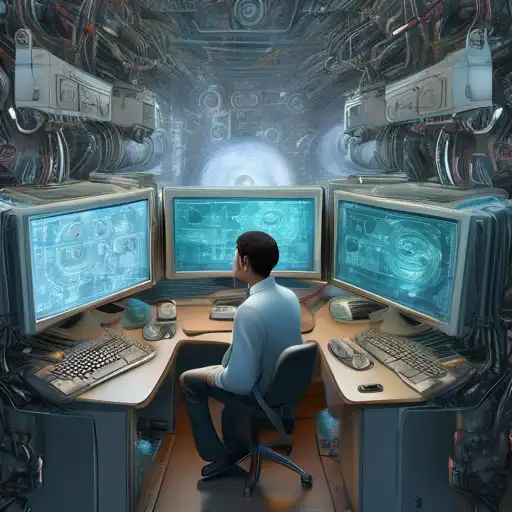Introduction to Computer Vision
Computer vision is a field of artificial intelligence that trains computers to interpret and understand the visual world. By leveraging digital images from cameras and videos and deep learning models, machines can accurately identify and classify objects—and then react to what they 'see'.
How Computer Vision Works
At its core, computer vision involves the automatic extraction, analysis, and understanding of useful information from a single image or a sequence of images. It involves the development of a theoretical and algorithmic basis to achieve automatic visual understanding.
Key Technologies Behind Computer Vision
- Image Processing: Enhances the quality of images to extract more information.
- Pattern Recognition: Identifies patterns in visual data to classify and recognize objects.
- Machine Learning: Uses algorithms to learn from and make predictions on data.
- Deep Learning: A subset of machine learning that uses neural networks with many layers to analyze various factors of data.
Applications of Computer Vision
Computer vision is used in a wide range of applications, from facial recognition systems to autonomous vehicles. Here are some of the most impactful applications:
- Healthcare: From detecting tumors in radiology scans to assisting in surgeries.
- Retail: Automated checkout systems and inventory management.
- Security: Surveillance systems that can detect suspicious activities.
- Agriculture: Monitoring crop health and automating harvesting processes.
Challenges in Computer Vision
Despite its advancements, computer vision faces several challenges, including the need for large datasets for training, the complexity of visual data, and issues related to privacy and ethics.
The Future of Computer Vision
The future of computer vision is incredibly promising, with advancements in AI and machine learning paving the way for more sophisticated and accurate systems. As technology evolves, we can expect computer vision to become even more integrated into our daily lives, transforming industries and creating new opportunities for innovation.
For more insights into how artificial intelligence is changing the world, check out our article on The AI Revolution.
